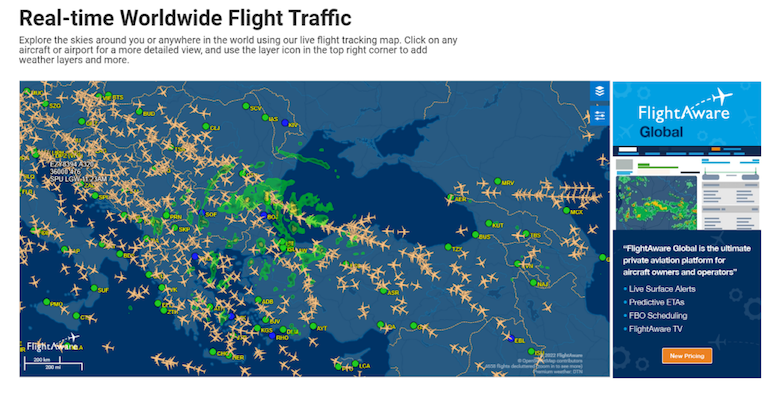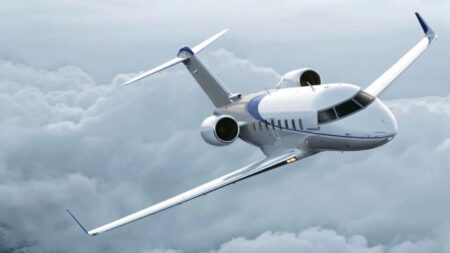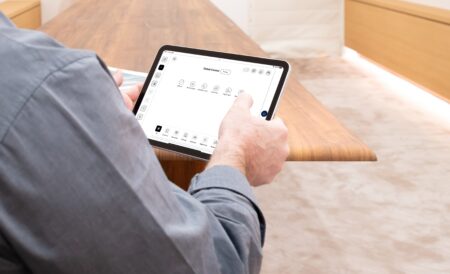FlightAware has added the capability for new and existing users of its flight status software, AeroAPI to access more than ten years of data about flights.
The historical dataset covers all of the flights made around the world since January 1, 2011 apart from the flights that have requested to be blocked.
The data has been collected by FlightAware’s terrestrial ADS-B receiver network – a collection of 35,000 radio receivers in more 200 countries enables the collection of location data. “If not the largest terrestrial system for collecting flight data its very close to being it,” said Matt Davis, speaking at the NBAA-BACE 2022 event in Orlando, Florida.
FlightAware tracks around 14,000 aircraft and adds around 142,000 flights to the dataset every day. It contains more than 713 million flights.
Where aircraft operators or owners have requested for the details of their flight to be blocked from public access, something which FlightAware estimates applies to between 20 to 50% of flights, the company can predict the activity.
“This dataset is like a time machine. It can tell you what’s happening now, in the past and predict the future. If you are an operator you are going to be interested in how you can improve the performance of your fleet or analyze a competitor’s fleet.
“If you are dispatcher, the viewing capability is going to be helpful. FBOs can tell when to get a fuel truck ready for the ramp for an incoming flight.”
Access to AeroAPI is available under three tiers: Personal, Standard and Premium and starts at US$100.
Flight data can be recalled by flight ident or registration number, data or date range and gives a final flight status and times, the complete flight track and static map images, including the weather during the flight.
Tammy Bowe, product management specialist at FlightAware said, “We have use cases from dozens of customers. The most obvious use is post operational analysis on events, weather events or problematic flights.
“You might want to fill in gaps in your own data or review aircraft history – of usage, where aircraft have flown – which is useful for owners, lessors, insurers or flight schools or MROs. You can analyze decision-making about flights, you can compare to planned times and identify trends.”
Predictive ETAs and taxi out durations, are calculated by machine learning algorithms that are part of the company’s Foresight software.
FlightAware launched the capability to predict taxi out times earlier this year through foresight.
Aircraft taxi times are typically not well-modeled, and a generic estimate, using historical data is widely used.
Taxi-Out Duration estimates from Foresight are based on quantifiable real-time factors using machine learning models thereby and aim to improve operational efficiency and increasing sustainability. Available at almost any airport, it uses a variety of data including aircraft type, time of day, transponder codes, airport position, schedules, and recent traffic rates.





